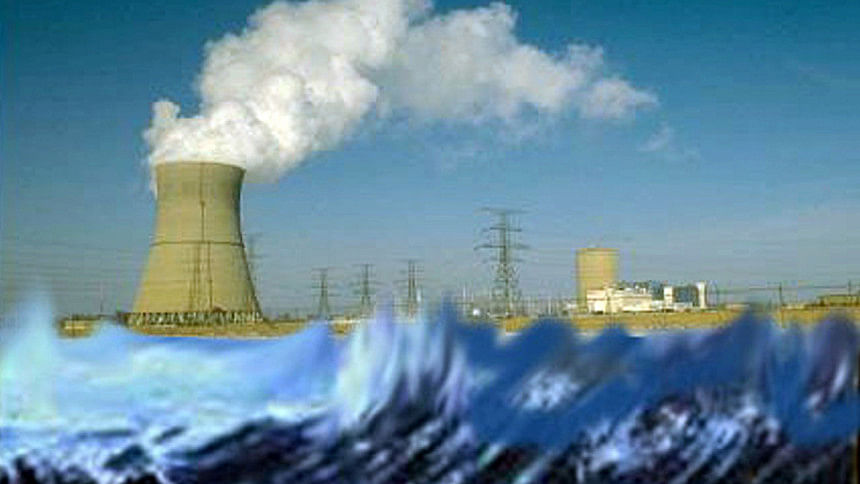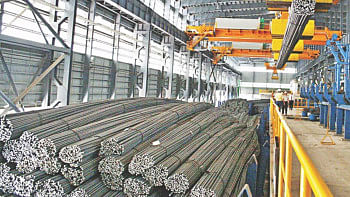Effects of Climate Change on Nuclear Power Plants: Stop challenging nature

He tiny carbon footprint of nuclear fuel has made nuclear energy an important player in the battle against climate change. Yet this advantage would be moot if nuclear power plants cannot operate, or became too dangerous to operate because of global warming.
Nuclear power plants are usually built near low-lying coastlines because they need access to vast quantities of water to keep their reactors cool. Even when a plant isn't running, its fuel continues to generate heat that needs to be controlled and cooled to prevent explosions or radioactive leaks. It is this attachment to water that makes nuclear power plants susceptible to climate change.
Nuclear reactors cannot be operated safely during heat waves because searing summer heat affects the performance of their cooling systems. In August 2012, the Millstone Nuclear Plant in Waterford, Connecticut, had to shut down one of its two reactors because water drawn from the Long Island Sound was too warm to cool it. A month earlier, the Vermont Yankee Plant had to limit output four times because of low river flow and overwhelming heat.
These incidents tell us in unambiguous terms that we are already seeing the effects of global warming on the operation of nuclear power plants. Indeed, if global warming continues unabated and if summer temperatures soar above average, many nuclear power plants could face a dilemma – either cut output or violate safety regulations.
According to the Intergovernmental Panel on Climate Change, the earth warmed roughly 0.85 degrees Celsius from 1880 to 2012. However, if we consume ever more fossil fuel, greenhouse gas concentrations, and hence global temperature, will continue to rise at an alarming rate. Based on various climate models, NASA predicts that the earth's average surface temperature could rise between 2 and 6 degrees Celsius by the end of this century. These numbers are significant because it takes a vast amount of heat to warm all the oceans, seas and land by that much.
Because of global warming, the temperature of oceans is rising, thereby causing the water to expand and raise the average water level each year. Also, with the rise in global temperature, polar icecaps, glaciers and the ice that is currently on land, such as ice sheets in Greenland, are melting. As these water flow into the oceans, the water levels rise even more.
Since 1880, sea levels have risen by about eight inches, notes Climate Central, an independent Princeton-based organisation of leading scientists and journalists researching and reporting the facts about our changing climate. Their projections show there's a high likelihood that sea levels will rise by at least another eight inches by 2050. The US National Oceanic and Atmospheric Administration's worst-case scenario, meanwhile, predicts that the oceans will rise nearly seven feet in the next 84 years.
Higher sea levels mean seawater will travel farther inland, creating potential hazards in areas that may have previously been considered safe for nuclear power plants. A study by American and German scientists reveal that rising sea levels could put more than 60 US nuclear plants within reach of the so-called "100-year flood" by the end of the century if emission of greenhouse gases is not checked.
Another consequence of global warming is an increase in the intensity of hurricanes. This is not to say that an accident will happen every time a hurricane passes by a nuclear plant. Unlike earthquakes, hurricanes can be predicted, allowing time for preparation.
But most nuclear power facilities were built well before scientists understood just how climate change will affect them in the future. Hence, their design did not take into account the effects of catastrophic floods, high storm surges and heavy rainfall resulting from a powerful hurricane.
As Hurricane Sandy barreled ashore in 2012, the storm forced the shutdown of several northeast coastal nuclear power reactors, including the Oyster Creek plant on the Jersey Shore, which took the brunt of Sandy's huge storm surge. The storm caused problems with the plant's water intake structure affecting the pumps that circulate cooling water through the plant. Another reactor at Indian Point, north of New York City, shut down because of power grid disruptions, and a third reactor in southern New Jersey shut down when Sandy knocked out four of its circulating water pumps.
We can no longer deny that most forms of energy generation, including nuclear power, are vulnerable to the effects of climate change. With the passage of time, the effects are only going to get worse. A recent report of Climate Central predicts that in the future, storm-driven floods reaching four feet above the high-tide line will more likely occur twice as often as today. This is yet another argument against a wholesale shift towards nuclear power.
If nuclear power is to be used to mitigate the effects of climate change, it must also be capable of adapting to them. There are, however, serious doubts that it can. The decision to close Diablo Canyon, the last remaining nuclear power plant in California, reaffirms the doubt. Advocates of clean and safe energy herald the closure as the "end of an atomic era" and "a clear blueprint for fighting climate change."
Finally, a few words about Rooppur are in order. The vulnerability of nuclear power plants to risks posed by climate change raises serious questions about the wisdom of Bangladeshi policymakers to go ahead with the nuclear project in a country where inland sources of water are becoming scarce, where coastal nuclear plants are impractical, where killer cyclones and violent twisters wreak havoc, where catastrophic floods occur at regular interval and where summer months are unbearably hot. If they do build the nuclear power plant, they will be challenging not only Mother Nature, they will also be playing Russian roulette with unsafe nuclear reactors built by Rosatom, a company whose nuclear expansion ambitions both within and outside Russia pose unnecessary and unacceptable risks to communities and customers alike.
The writer is Professor of Physics at Fordham University, New York.

 For all latest news, follow The Daily Star's Google News channel.
For all latest news, follow The Daily Star's Google News channel. 



Comments